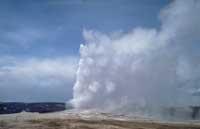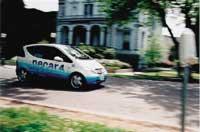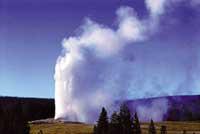Iceland: north furnace
2000/04/01 Roa Zubia, Guillermo - Elhuyar Zientzia Iturria: Elhuyar aldizkaria
Iceland has an approximate population of 268,000 people and has an annual energy supply of 98,000 billion joules. That is, 366 billion joules per person. To give meaning to the number, we can think that it is one of the highest in the world. All this energy comes from diverse sources, but most come from Iceland's greatest treasure: geothermal energy. 48.8% of the collection is geothermal. In addition, the next most important source, 17.2%, comes from another renewable energy: hydroelectric energy. The rest is extracted from oil and coal, but this contribution can be considered insufficient.
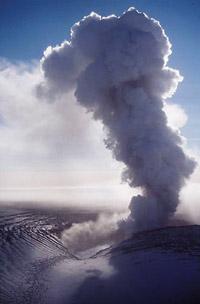
Heaters
It is the most widespread use of geothermal energy in heating. 85% of Iceland's households are heated by this system. Not much electricity is generated from this type of energy, since most of the electricity they need can be obtained at low cost from hydroelectric energy. In 1970 the geothermal street heater was on the legs of half the population. After the crisis of that decade, indigenous renewable energies aroused great interest and began to buy much less oil.
They already have a great experience in the use of geothermal energy in Iceland. Hot water service is also offered in small towns and isolated rural houses. 4.000 people have a hot water distribution pipe system at 900 kilometers. Most of the tubes are plastic and are manufactured in Iceland. The greatest limitation of plastic lies in the pressure and temperature of the water it carries. For example, a temperature above 85°C can damage the installation. However, there are no corrosion problems.
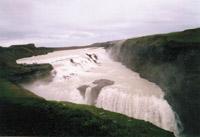
Geothermal water can be purchased in Iceland in two ways, i.e. by subscription and consumption. The last is the usual. The subscription is based on the water flow that is expected to be spent in dark and cold months, that is, in addition to what is paid for being paid, they must pay in advance the maximum amount of water they will use.
However, overexploitation is causing the water level of some geothermal sources to decrease or cool. The chemical composition of water in cooling is also changing. Therefore, the National Energy Authority is promoting research in this area. The question is, on the one hand, whether geothermal is transformed both from "non-renewable energy" and from its level of exploitation.
Swimming pools
The second use of geothermal water is related to the bath. For 1,100 years it has been used for bathing, cleaning and cooking. There are 120 public pools heated with geothermal water. Most are away from home and useful for almost all year. The largest has 1,500 m2 and is in Reykjavik. The photographs of these pools have eventually become one of the hallmarks of Iceland.
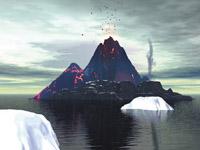
Snow thaw
In the last 15 years geothermal energy has been increasingly seen in thawing works, especially in sidewalks and car parks. When the hot water began to be transported in plastic pipes, this method extended a lot, since it takes advantage of the hot water already used in the houses. This water leaves the homes about 35ºC. Currently snow melts of 350,000 m2 of surface. Snow systems have been installed on the street. Annual energy consumption depends on weather conditions.
Industrial polygons
Geothermal energy is also used in the industry. The Kisilidjan factory on Lake My is one of the largest in the world working with geothermal steam. It was launched in 1967 for the extraction and export of diatomites. This material consists of filters and fillers. In the Reykjarnes peninsula there was a salt extraction plant. It extracted salt for domestic and industrial fishing use, but failed and had to close in 1994. In recent years it has been reopened for the preparation of bath salts.
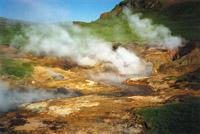
Greenhouses
Geothermal energy has also been used to heat greenhouses since 1920. There were hot soils, before potatoes were grown. With the incorporation of artificial light in recent years, the processing period has been extended to nine months. Orchards with underground or walled pipes give tomatoes, cucumbers and peppers. Many flowers also grow.
Fish farming
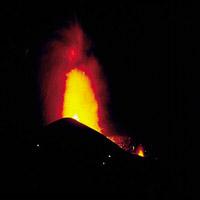
In the 1980s there was a huge boost in fishing in Iceland and 120 land areas were built. The one that grows the most is salmon, but also trout and other fish. Lacking subsidy, large facilities have failed, so the use of geothermal energy has not increased much. Currently 70 areas work. In many of them, water at 4-6°C is geothermically heated to 12°C, the ideal temperature for fish growth.
Electricity production
Electricity production in Iceland in general in Bjamarflaga. Next to the diatomite factory is located in the same steam source. The factory began electrical production from the beginning. Part of the steam at 270°C.
In 1977 the Krafla factory was launched. Two years earlier, under construction, a volcano exploded two kilometers later. As a result, the volcano gases contaminated the geothermal fluid and caused corrosion by the formation of iron complexes and silicates. The results of recent analyses show that the concentration of magma gases has decreased considerably. Fortunately, lava and earthquakes did not spoil the trail. Despite nine eruptions, the last in September 1984, the factory works properly. The large amount of water from the thaw generates a large amount of hydroelectric force. Therefore, every summer they close the factory for four months.
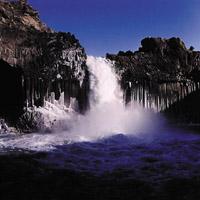
The third factory is in Svartsengi, 40 kilometers from Reykjavik. In addition to generating electricity, it sends water for street heaters, which was the original objective of the factory.
Future
It is intended to invent other uses of geothermal energy and find new sources. For example, it is intended to expand or build aluminum and magnesium castings. But keep in mind that the industry consumes half of Iceland's electricity production. Therefore, industrial expansion must be accompanied by an increase in electricity production. Therefore, the amount of electricity generated from geothermal energy is expected to be three times higher in the coming years.
Iceland, one of the richest countries in the world, has the treasure buried. A renewable treasure. The resources are different from those of other territories, it is true. But they are also an example in the use of their energy. It is something to think about.

Gai honi buruzko eduki gehiago
Elhuyarrek garatutako teknologia



